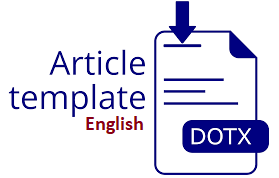Pengembangan Teknologi ERP Modul Accounting Management Studi Kasus: Anton Aluminium
DOI:
https://doi.org/10.30865/resolusi.v1i2.83Keywords:
ERP; Accounting Management; PHP; MySQL; TechnologyAbstract
The use of technology is expected to provide great benefits to the competitive business world. Companies that are able to compete in this competition are companies that are able to implement technology into their companies. One type of technology implementation in terms of increasing business competition is to use an Enterprise Resource Planning, or ERP system, in which there are several modules, one of which is the accounting management module. Anton Aluminum is a business place that is engaged in the sale of household furniture such as cabinets made of aluminum. At the beginning of the business, the owner did the marketing of his goods by mouth, for now the sales system used by the company is still manual or written. The problem that occurs with Anton Aluminum is that there are often errors in data processing and the preparation of monthly reports still requires a lot of time and accuracy, resulting in frequent delays in presenting information. To solve this problem, we need an accounting management system. Where later it can process financial transaction data, present financial data reports including journal reports, ledger reports, trial balance reports and income statements. In building this application program, using PHP and Javascript as a programming language media and MySQL is used as database management. This system is expected to make it easier for Anton Aluminum to record transactions and financial reports.
Downloads
References
D. Prakasita N and M. A. Nugroho, “PERANCANGAN SISTEM INFORMASI AKUNTANSI PENJUALAN DAN PERSEDIAAN DI CENTRAL STEAK AND COFFEEBOYOLALI,” NOMINAL, vol. VII, no. 1, pp. 69–81, 2018.
I. Lutfina, “Pemanfaatan Teknologi Informasi Komunikasi Dalam Pembelajaran Fikih Di MTsN Tunggangri Kalidawir Tulungagung,” IAIN Tulungagung, 2018.
“Apakah sistem informasi itu?,” School of Information Systems. Accessed: Aug. 26, 2020. [Online]. Available: https://sis.binus.ac.id/2017/09/12/apakah-sistem-informasi-itu-2/.
E. Hanifah, “Implementasi Sistem Informasi Warehouse Management Berbasis Enterprise Resource Planning (ERP) Dengan Menggunakan Aplikasi Odoo,” Universitas Muhammadiyah Surakarta, 2017.
J. D. Butarbutar, H. Karamoy, and V. Z. Tirayoh, “Analisis Penerapan Sistem Akuntansi Manajemen Terhadap Pengendalian Kualitas Produk di PT. Empat Saudara Manado,” J. Ris. Akunt. Going Concern, vol. 12, no. 1, pp. 187–193, 2017.
L. Zulhamri, “Pengaruh Ukuran Perusahaan, Profitabilitas Dan Financial Leverage Terhadap Praktik Perataan Laba (Income Smoothing) (Studi Pada Perusahaan Pertambangan yang Terdaftar di BEI),” Universitas Pasundan, 2016.
D. Sukrianto, “PENERAPAN TEKNOLOGI BARCODE PADA PENGOLAHAN DATAPEMBAYARAN SUMBANGAN PEMBINAAN PENDIDIKAN (SPP),” vol. 1, 2017.
Ermatita, “ANALISIS DAN PERANCANGAN SISTEM INFORMASI PERPUSTAKAAN,” vol. 8, 2016.
MADCOMS, Pemrograman PHP dan MySQL Untuk Pemula. Yogyakarta: Andi, 2016.
S. Wasiyanti and R. Talaohu, “Sistem Informasi Penjualan Obat Berbasis Web Pada Apotek Kondang Waras Depok,” PARADIGMA, vol. XVIII, no. 2, 2016.
I. Ripai, “Rancang Bangin Media Pembelajaran Menggunakan Android Untuk Mata Kuliah Pemrograman Internet Menggunakan Magazine App Maker,” J. ICT Learn., vol. 3, no. 1, 2017.
Bila bermanfaat silahkan share artikel ini
Berikan Komentar Anda terhadap artikel Pengembangan Teknologi ERP Modul Accounting Management Studi Kasus: Anton Aluminium
ARTICLE HISTORY
Issue
Section
Authors who publish with this journal agree to the following terms:
- Authors retain copyright and grant the journal right of first publication with the work simultaneously licensed under Creative Commons Attribution 4.0 International License that allows others to share the work with an acknowledgment of the work's authorship and initial publication in this journal.
- Authors are able to enter into separate, additional contractual arrangements for the non-exclusive distribution of the journal's published version of the work (e.g., post it to an institutional repository or publish it in a book), with an acknowledgment of its initial publication in this journal.
- Authors are permitted and encouraged to post their work online (e.g., in institutional repositories or on their website) prior to and during the submission process, as it can lead to productive exchanges, as well as earlier and greater citation of published work (Refer to The Effect of Open Access).















